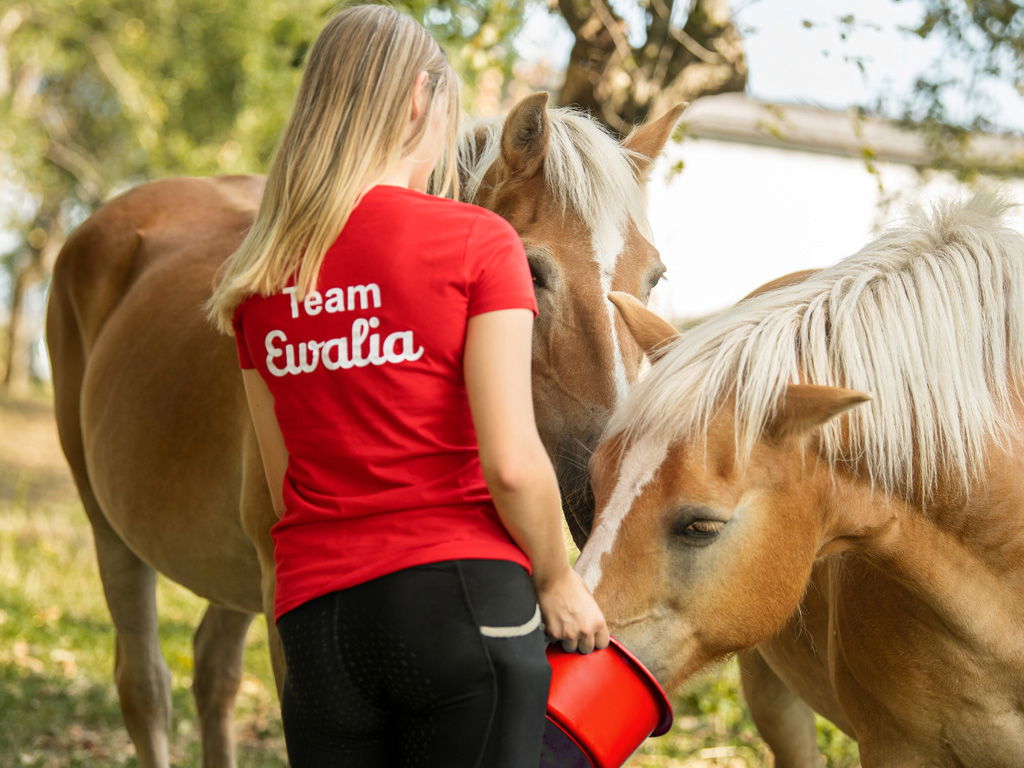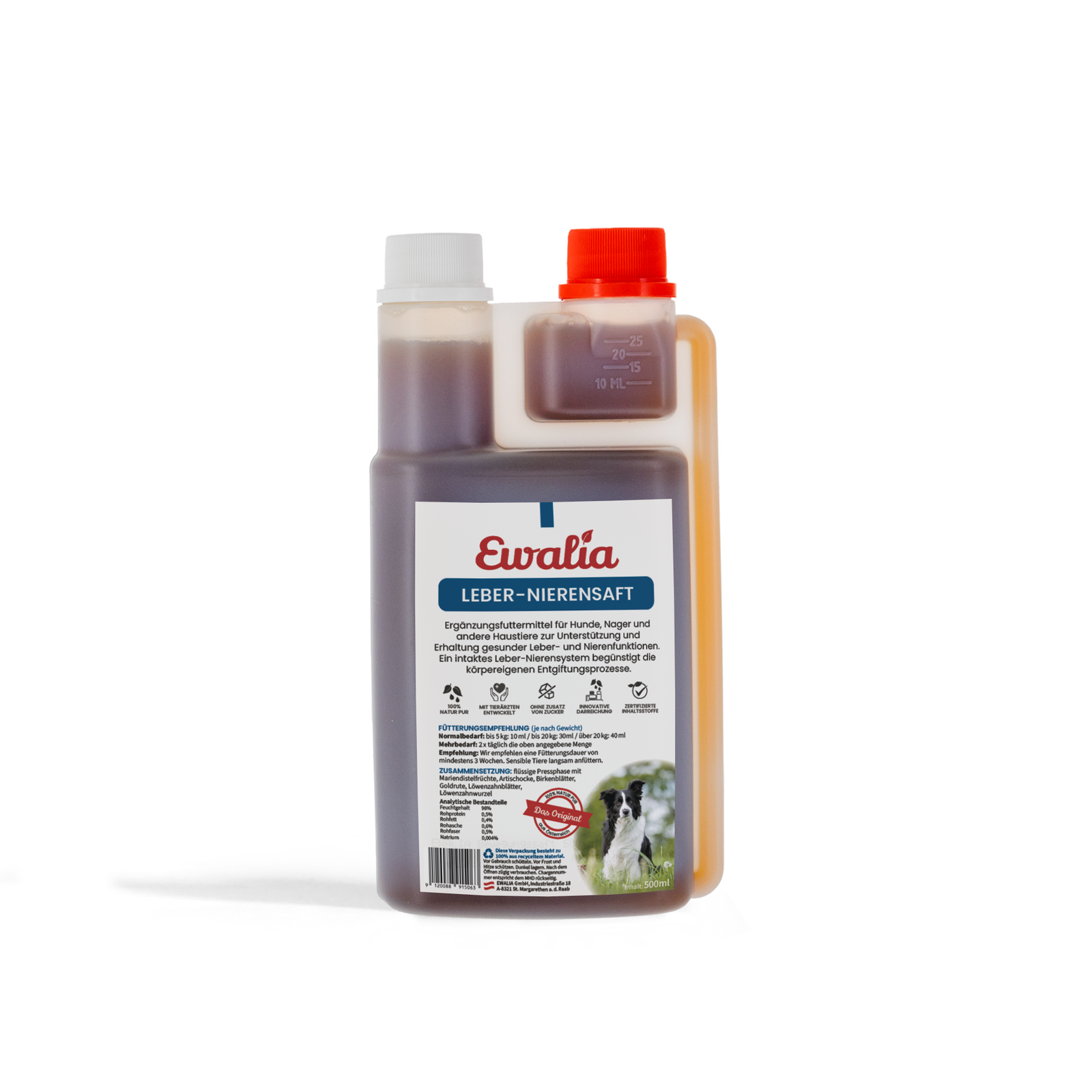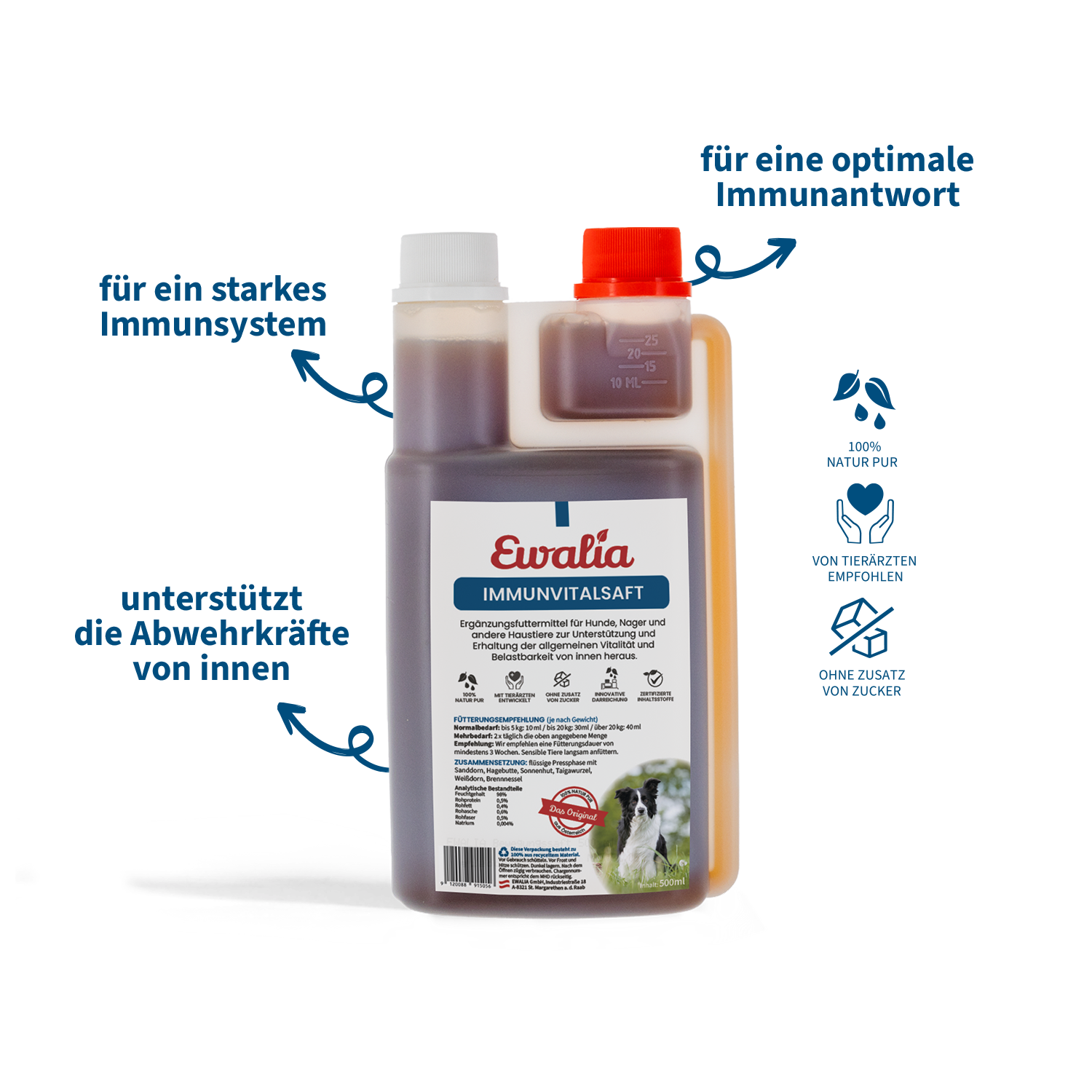Leishmaniasis – a dangerous holiday souvenir

Summertime means summer holidays! Many dog owners look forward to summer holidays abroad with their dogs. However, sun and fun in the sand aren't the only things waiting at our favourite destinations: the sandfly, native to the Mediterranean region, is a vector of one of the most dangerous subtropical diseases, leishmaniasis. The number of leishmaniasis cases has risen dramatically in recent years. Learn here about leishmaniasis and what you can do to protect your dog.
What is leishmaniasis?
Leishmaniasis is caused by an ectoparasite of the genus Leishmania infantum, which in most cases is transmitted by a bite from a sandfly (Phlebotomus perniciosus). Vertical transmission from the mother dog to her pup, whether from the mating act or through blood transfusion, is also a possible but much rarer occurrence. The parasites colonise the immune system's scavenger cells (macrophages) and begin to spread in the dog's organism. Symptoms of an infection are varied, and appear only months, sometimes years, after infection has occurred. Leishmaniasis is therefore often diagnosed quite late. Some dogs are hardly affected by the disease, whilst in others it can be life-threatening.
Humans can also contract leishmaniasis. People with weak immune systems should therefore pay particular attention to hygiene due to the open sores it causes in dogs. For safety's sake, keep afflicted dogs away from small children!
Direct infection through contact with a dog with leishmaniasis is highly unlikely. The path of transmission from the wound secretion of an infected dog is possible; however, no proven cases have been reported. Transmission of leishmaniasis from a dog bite, saliva, or fresh blood is also possible but unlikely.
Forms of leishmaniasis
There are three types of leishmaniasis, distinguishable by the progression of the disease. Visceral leishmaniasis attacks the internal organs, causing swelling of the liver and spleen. The skin dries out and blackens, which is why the disease is also called "kala-azar", meaning "black fever". Left untreated, this type can lead to death.
Cutaneous leishmaniasis is also known as "desert boil". In contrast to the visceral form, cutaneous leishmaniasis only affects the skin and not the internal organs. The skin develops itchy nodules, papules, or painful ulcers.
Mucocutaneous leishmaniasis attacks both the skin and the mucosa, often causing severe skin lesions. This type of the disease is primarily found in South America.
The disease's progression is determined by the dog's immune system!
Whether and which symptoms appear will depend on the individual dog's immune response! Best case, the dog's immune system fights off the pathogens and the animal does not fall ill. It is currently assumed that every eighth case of infection is prevented by a spontaneous response from the immune system. Dogs with weakened immune systems and pre-existing conditions are at higher risk of contracting leishmaniasis.
What are the symptoms of canine leishmaniasis?
Whilst symptoms of leishmaniasis may vary, the following are the most common:
- Weakness
- Fever
- Pale mucus membranes
- Swollen lymph nodes
- Lethargy
- Muscle atrophy
- Weight loss despite a large appetite, or loss of appetite to rejection of feed
- Great thirst and frequent drinking
- Susceptibility to other infections
Lesions on the skin and mucus membranes
Over 90% of cases involve typical, non-itching, flaking skin lesions such as pustules or papules. These skin lesions often appear symmetrically, for example
- on the ears
- on the snout
- around the eyes ("eyeglasses" effect)
- on the paws: cracks and nail bed infections which can result in deformed nails.
Mucosal damage leads to
- lesions in the nasal mucosa
- nosebleeds
- inflammations and ulcers in the areas of the nose, mouth, and genitals.
If the eyes are affected, the dog will have
- dry eye
- keratitis, inflamed eyelids, conjunctivitis
- eye infections.
Lameness
An infection can also spread and cause inflammation in the muscles and joints, for example masticatory muscle myositis.
Inflamed joints cause painful lameness. These mostly occur at the carpal or elbow joint as well as at the knee and hock.
They can also cause vascular diseases due to immune complex deposits and neurological disorders.
Damage to internal organs
Visceral leishmaniasis attacks the internal organs and leads to damage in the kidneys, liver, spleen, and bowel. 90% of dogs with untreated leishmaniasis die within twelve months, usually from kidney failure.
How is leishmaniasis diagnosed?
If leishmaniasis is suspected, for example after travel to high-risk areas or if the dog has been imported from another country, the following procedures can bring clarity:
- microscopic examination of a skin scraping in the case of lesions
- blood count
- blood test for leishmaniasis antibodies (6–8 weeks after travel/import)
- microscopic examination of tissue sample from lymph nodes or bone marrow to determine the presence of pathogens in the cells
- PCR test (molecularbiological test) on tissue sample
These tests are carried out to confirm or rule out leishmaniasis in dogs with typical symptoms and/or clinical-pathological blood work results.
Dogs from high-risk areas or those that accompanied their owners on holiday should also be tested, even if they appear healthy!
Special cases: stray dogs from southern lands
Pictures of stray dogs on the streets of southern and eastern European cities often spark the desire in many dog lovers to provide a new home for one of these dogs. Adopting a stray, however, comes with the risk that it is infected with leishmaniasis. Dogs that live outside are unprotected from sandfly bites and receive no medical care. It is assumed that, out of a total of 15 million dogs living in southern and eastern Europe, about 2.5 million are carriers of leishmaniasis!
This doesn't mean that all stray dogs are infected. Regional breeds, such as Spain's podencos, are considered robust and rarely display symptoms. But even clinically healthy dogs can be infected and fall ill at any time, requiring life-long treatment which can mean significant costs. The stress from transport and the new environment can weaken the immune system and encourage a latent outbreak.
Reputable agencies generally provide only those animals that have been tested for leishmaniasis or other Mediterranean diseases.
Tip: If in doubt, have the animal tested by a vet immediately. Testing should be repeated in six months!
What is the treatment for leishmaniasis?
There are four stages of leishmaniasis based on the level of antibody titres detected, and treatment differs accordingly.
A dog in Stage I has low antibody titres and shows only mild symptoms, such as inflamed skin or swollen lymph nodes. Specific treatment for leishmaniasis is often not even necessary. Prognosis for recovery is good, but the dog should nevertheless be tested regularly.
From Stage II onwards, a dog will have high antibody titres and clear clinical symptoms, and must be administered special medications for leishmaniasis. The dog's prognosis can range from "guarded" to "poor".
A dog in Stage IV will have very high antibody titres and internal organ damage, particularly to the kidneys. In this stage the disease can be life-threatening, and treatment will be based on what organ damage has occurred.
Medications can help to relieve symptoms, but the pathogens will remain in the body for the rest of the dog's life and can cause another outbreak at any time!
Is leishmaniasis curable?
Leishmaniasis is a chronic disease. Even with careful treatment and care, a complete cure is hardly possible, as relapses can always occur.
Treatment usually involves cytotoxic agents and antiprotozoals, medications that inhibit cell growth or are used to treat parasitic infectious diseases. Uricostatic drugs may also be administered. These drugs inhibit the breakdown of purines into uric acid, which is why they are also used in human medicine to treat gout. Treatment for leishmaniasis involves inhibiting the multiplication of the leishmania, and is always carried out in combination with other medications.
Diet for leishmaniasis?
Leishmania feed on purines, among other things, in the canine body. Purines are produced in the canine body, which is why the parasites cannot simply be "starved". It is advised, however, that purine supply be reduced through diet. High levels of purines are found in skin and in all internal organs, such as the heart, kidneys, liver, rumen, lungs, and in meat extracts. Do not allow the dog to eat dried offal or chew treats that are rich in connective tissue such as rawhide, ears, or bully sticks.
Tip: Game jerky or strips of muscle meat can be offered as alternatives.
Prevent strain on the kidneys
All purines that are not needed to form nucleic acids must be broken down and excreted via the kidneys. Oversupply puts strain on the metabolisms of dogs afflicted with leishmaniasis and fosters the formation of kidney stones during treatment.
Tip: Increased fluid intake will help combat kidney stones. A little yoghurt, clear soup, or grated cheese in the water bowl will persuade most dogs to drink, and several drinking bowls in different parts of the house will often suffice. Make sure the dog gets plenty of drinking water on long walks, car trips, or when out playing!
Assist kidney function with herbs that help to flush out toxins!
- Goldenrod is a diuretic and an anti-inflammatory.
- Dandelion increases urine production and helps to take strain off of the metabolism.
- Birch leaves are a gentle diuretic and support the elimination of toxins.
Which feeds are low in purines?
Eggs, fruits, vegetables, potatoes and white rice are all low-purine foods. Most dairy products, including quark, yoghurt, etc., contain no purines.
Caution: When feeding your dog a low-purine diet, make sure that the dog gets enough high-quality proteins, important amino acids, and vitamins.
What can I add to my dog's low-purine diet?
Pure muscle meat, for example beef, chicken, turkey, duck, or rabbit, are good protein suppliers. Cooked muscle meat is easier to digest and often better tolerated.
Canine rations can be supplemented with linseed oil, which contains valuable omega-3 fatty acids and has a positive effect on inflammation. The linoleic acid in linseed oil protects cells and combats skin flaking and coat failure.
The protein in spirulina algae is 50–60% of its total mass and a pure plant-based supply of energy. Spirulina also contains substances that promote moulting and support the immune system.
How can I prevent leishmaniasis infection?
Insect protection
Before travelling to southern climes, have your dog treated with preparations that reliably prevent sandfly bites. These insecticides are available from your vet as spot-ons and pet collars.
Tip: Apply spot-ons at least two days and collars 1 to 2 weeks before departure!
Caution: Not all fly and tick products work against sandflies. Buying over-the-counter products can be risky!
Use insect screens in your holiday lodgings to protect both you and your dog. Sandflies are active at twilight and at night, so confine your outings with your dog to the daytime. And when on those outings, keep away from stables, dumps, sheds, and cellars – all places where sandflies like to breed!
Timely vaccination
There are currently two vaccines available for dogs. Both activate the cellular immune response rather than the formation of antibodies. This means that the vaccine cannot prevent infection, but it can strengthen the immune system's ability to eliminate the pathogen without an outbreak of the disease.
Vets therefore recommend a combination of the vaccine with spot-ons or collars to protect the dog even in high-risk areas.
Immunisation involves three injections at three-week intervals. The dog is fully protected starting one month after the third injection. Therefore plan ahead before your upcoming trip! Booster shots are given annually.
Caution: The dog must be tested before receiving the vaccine. The vaccine may only be given to healthy dogs that test negative!
My dog tested positive for leishmaniasis. How can I help him?
Recent scientific studies have shown that feeding garlic can inhibit the growth of leishmania and hinder their colonisation in macrophages. Garlic may help in treating canine leishmaniasis.
Caution: Allioideae plants may be poisonous for dogs! Excessive amounts of garlic can damage the red blood cells and result in gastrointestinal ailments. Consult with your vet before feeding your dog garlic!
According to studies, Artemisia annua (sweet wormwood) kills off leishmania and can be used to supplement treatment. Consult your vet to determine use and dosage!
Wild teasel has garnered a reputation as a "healing herb" against Lyme disease. Its effectiveness is not proven in studies but is based on empirical values. The substances in teasel have antibacterial and anti-inflammatory properties and are said to relieve leishmaniasis symptoms, making it an effective concomitant treatment.
Boosting the immune system
Unusual events, such as holiday travel or moving to a new home, can challenge the body's immune system. Stress – from travel, change of climate conditions, change of feed, or even just from more fun and physical activity than usual – can quickly bring the immune system to its limits. Strong natural defences can protect dogs that have tested positive and are not yet symptomatic. A balanced diet and the targeted supplementary feeding of herbs can strengthen your dog's defences!
- Echinacea has stimulating effects on the immune system and boosts the body's natural defences.
- Sea-buckthorn is high in vitamins and minerals that promote immune resistance.
- Rose hips contain high amounts of vitamin C and have antioxidant properties. They can also help relieve joint pain.
- Siberian ginseng has immunomodulatory properties and helps the body adjust to extra stress.
- Nettle is slightly anti-inflammatory and supports the organism in eliminating toxins.
A herbal immune booster can help alleviate symptoms and prevent relapses in dogs that have contracted leishmaniasis and are receiving treatment.
Sources
- Cäcilia Brendieck-Worm, Matthias F. Melzig: Phytotherapie in der Tiermedizin, Thieme 2018
- https://www.idexx.de/files/vector-borne-disease-brochure-de-de.pdf
- https://www.leishvet.org/wp-content/uploads/2018/09/DE-Guidelines.pdf
- https://www.bft-online.de/kleintiergesundheit/2013/leishmaniose/hintergrundinformationen-leishmaniose#:~:text=Die%20Leishmaniose%20ist%20eine%20Zoonose,wurden%20bisher%20sehr%20selten%20nachgewiesen.
- https://www.tieraerzteverlag.at/vetjournal/leishmaniose-beim-hund















